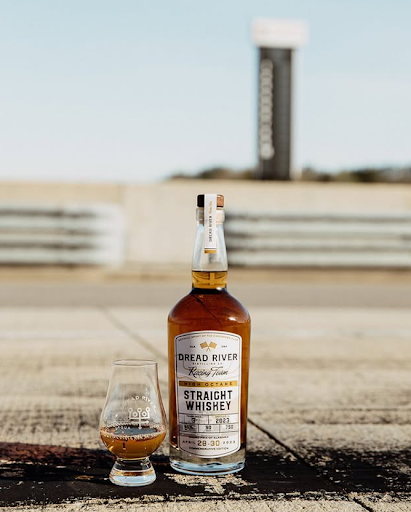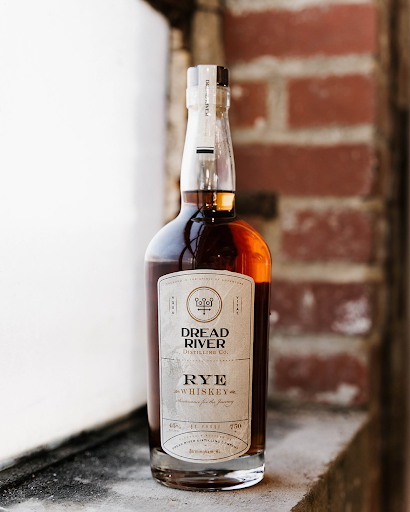Whiskey Myths Debunked: Separating Fact from Fiction
April 1, 2025
Dread River

Whiskey is not simply a drink but an heirloom, a tradition, and art passed from one generation to another. With whiskey becoming popular across the globe, it also acquired a collection of myths that confuse people’s notions about how to drink, age, or classify it. The myths have spread not only among everyday drinkers but even among connoisseurs who may be unconsciously disseminating myths.
In this piece, we shall separate myth from reality, laying to rest some of the most common myths surrounding whiskey through an evidence-based method. Whether you are a novice looking to uncover the world of whiskey or an aficionado wanting to deepen your knowledge, these observations will allow you to develop a more discerning and better-informed appreciation of this timeless spirit.
Myth #1: The Older the Whiskey, the Better
One of those old myths surrounding whiskey is that the older it is, the more it will taste good. But here’s the catch: while aging does contribute to the character of a whiskey, it doesn’t necessarily make it taste better. It’s sort of a fine dance between the whiskey and the oak barrel. If it doesn’t age long enough, the spirit will come across as somewhat green and harsh around the edges. But allow it to age too long, and you will overpower the real flavors of the whiskey with overbearing tannins and a dense woody profile.
The impact of aging is different based on various factors, including the weather around the distillery, the type of the barrel, and the conditions of storing the whiskey. Warm weather, such as in Kentucky or Alabama, ages the whiskey at a faster rate, pulling out full-on caramel and spice flavor characteristics faster. Colder weather, like that in Scotland, produces a slower process of aging with a slower progression of the addition of flavors. In the end, the best aging time will be based on the methods of production used by the whiskey, and a well-balanced, younger whiskey may be better than an over-aged one.
The Truth: Age Influences Flavor but Doesn’t Always Mean Higher Quality
Myth #2: Whiskey Should Always Be Drunk Neat

The idea that whiskey should always be drunk neat is a mere simplification that disregards the variety of whiskey drinkers and personal tastes. Though drinking whiskey neat is an excellent way to truly enjoy its whole complexity, mixing it with water or ice can greatly improve the experience by bringing out the hidden flavor and eliminating the burn from the alcohol.
A little water splash, for example, shatters the surface tension of the spirit, liberating more of the aromatic compounds that give whiskey depth. Poured over ice as with water, whiskey chills the sip some, dulls some of the stronger bitter alcoholic vapors, and makes it more appealing to beginners at whiskey tasting.
Besides this, whiskey has a core contribution to cocktails in which the concentrated flavors serve as the canvas used to create some of the most well-known cocktails such as the Old Fashioned, Manhattan, and Whiskey Sour. One of the most appealing things about whiskey is that it is impossible to go wrong.
The Truth: Personal Preference Dictates the Best Way to Enjoy Whiskey
Myth #3: Single Malt is better than blended whisky
Many people believe that blended whisky is not as good since single malt whisky is sometimes regarded as the apotheosis of whisky production. This is just a perspective, as opposed to a reality. Single malt whisky is made at one distillery from 100 percent malted barley, whereas blended whisky is the result of combining many whiskeys to create a balanced, uniform, and sometimes more sophisticated flavor.
Master blenders skillfully balance sweetness, spice, and complexity by astutely selecting several whiskeys. Some of the top whiskey producers worldwide, including some of Japan’s and Scotland’s most known brands, are masters at blending, creating expressions that are superior or comparable with many single malt. Readers should rather focus on how well a whiskey was made, how long it aged, and its components instead of worrying about whether it is a single malt or a blend.
The Reality: Blended Whiskeys Can Be Just as Complicated and Superior
Myth #4: Darker Whiskey Is Always Stronger
One of the biggest myths is that darker-colored whiskey is stronger or superior in taste to lighter-colored whiskey. Although the color will reflect aging and barrel impact, it contributes little to nothing regarding alcohol strength or taste.
Whiskey’s color is mostly acquired from the barrels that it is aged in. The oak type, char level, and use of the prior barrel will all have something to do with the end color. Sherry barrel-matured whiskeys, for example, become an amber-colored product, and those matured in lightly charred barrels get gold-colored.
The Truth: Color Does Not Determine Strength or Quality
Whiskey Trends in the Modern Era: What’s Shaping the Future?

As much as tradition is still at the center of whiskey culture, modern trends are changing the way we drink and view this much-loved spirit. The latest inventions contest old legends and set new standards in craftsmanship, sustainability, and flavor innovation. Craft and micro-distilleries, such as those following the Dread River Distillery mindset emphasizing terroir, handcrafted techniques, and small-batch releases, are among the more defining trends. Leading the way of creativity, these distilleries often use unorthodox materials including heirloom grains and new kinds of wood for aging, as well as cask finishing with wine, port, or rum barrels to create one-of-a-kind expressions.
Another prevailing trend is the growing trend towards sustainability and transparency. Sustainable whiskey production, including water stewardship, carbon-neutral operations, and regenerative grain cultivation, is becoming increasingly a norm of excellence in the industry.
In addition, whiskey lovers are increasingly embracing taste-led experiences with a revival in whiskey and food pairing, sensory tasting sessions, and bespoke mixology experiences. Online whiskey tastings and education modules are also reshaping accessibility, allowing global consumers to taste rare labels and distillery tours within their own homes.
The Craftsmanship and Innovation of Dread River Distillery
For consumers seeking small-batch whiskeys of the highest craftsmanship, Dread River Distillery is the standard of excellence, blending antique art and contemporary innovation with ease. Headquartered in Birmingham, Alabama, we are a perfectionist regarding precision, quality, and authenticity. Unlike mass-market whiskeys founded on marketing gimmicks, Dread River is a master at meticulous grain selection, patient aging, and skillful blending, every bottle a testament to true craftsmanship. Whether you’re in search of a cask-strength whiskey with depth or a well-balanced, smooth blend, Dread River has something to challenge the status quo without compromising on the art of distillation.
For those looking for masterfully handcrafted small-batch whiskey, we have the finest offerings that exceed expectations and stay true to tradition. Look through our inventory to find the best spirits that represent precision, passion, and innovation. Take home a masterpiece that is the essence of whiskey fermentation, full of character, depth, and the heritage of genuine craftsmanship!